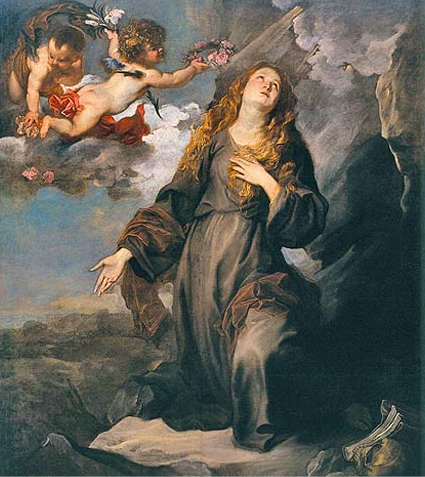"Van Dyck in Sicily: Painting and the Plague", at Dulwich Picture Gallery.
It is 1621 and Anthony Van Dyck, future artist by appointment to King Charles I of England, is painting his self-portrait. He is only in his early twenties but the young Flemish painter has already acquired aristocratic airs and graces from his master, Peter Paul Rubens, painter of princes and the most celebrated artist in Northern Europe. Striking a nonchalant pose by the base of a classical column, dawn glimmering in the cloud-streaked sky behind him, he wears his hair in a fashionably dishevelled style. There is a look of keen anticipation in his eyes. As he fingers the collar of his fine white shirt, he might almost be pointing himself out as a singularly bright prospect.
Within a year the artist would travel to Italy, just as Rubens had done in his own youth. Van Dyck went to Rome and later to Genoa, before accepting an invitation to visit Palermo from the Spanish Viceroy of Sicily, Emanuele Filiberto of Savoy. He remained in the Sicilian capital for some eighteen months, fortunate to survive the epidemic of bubonic plague that struck the city shortly after his arrival in the spring of 1624. "Van Dyck in Sicily: Painting and the Plague", a small but fascinating exhibition at Dulwich Picture Gallery, brings together all sixteen of the pictures that he is known to have painted there.
The show opens with a juxtaposition, the Self-portrait of 1621 set against Van Dyck’s rather grander depiction of the man who tempted him to Sicily. Emanuele Filiberto of Savoy is one of the masterpieces of the painter’s early career. Head framed by a lace ruff painted with bravura intricacy, the Viceroy is the very embodiment of Spanish rule in Sicily. A pale-faced man with...


